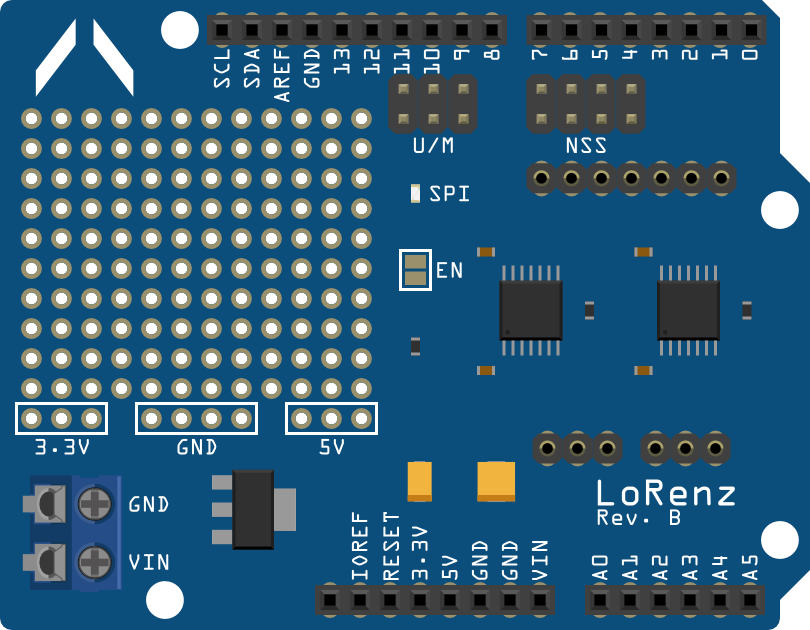This shield is still early in developement. The shield, module or breakout layouts might be changed at any moment! Watch this repo for progress updates. To get notifications about every commit, use the following link to set up an RSS feed reader: https://github.com/jgromes/LoRenz/commits/master.atom.
If you're looking for Arduino library to use with these modules, it has its own repository: https://github.com/jgromes/LoRaLib
DISCLAIMER: All schematic and board files are provided 'AS IS'. see license.txt for details.
The following is a listing of all the files in the eagle folder:
-
shieldThis will most likely be the starting point of your experiments with LoRa. The shield is compatible with Arduino R3 pinout and has many ways to make your life easier. The main features include:
- Dedicated 3.3V linear regulator to provide more than enough power for the LoRa module.
- Arduino UNO and Mega compatibility.
- On-board prototyping area with separate power rails.
- Coaxial connector on the breakout board for connecting antenna.
- NSS jumper to allow for LoRenz shield stacking.
- The shield has a place for LED that will light up when there are data being transferred to/from the LoRa module. To enable this feature, short the EN pads with solder.
Please note that to use this shield, you will need to have a breakout board to mount the LoRa module. IMPORTANT: There are several incompatible types of these modules being sold, make sure that your module matches your breakout board!
Arduino UNO setup:
To use LoRenz shield with Arduino UNO, short all the jumpers on U/M pin header (bright red in the picture below). You will also have to short one of the pin pairs on NSS pin header. The NSS pin header allows you to stack up to four LoRenz shields on one Arduino by shorting different pin pair on each shield. If you will only be using one LoRenz shield, I suggest using the pin 7, since that is the default library setting. If you want to stack multiple LoRenz shields, each of them must have a different pin pair shorted. In that case, you will also have to provide the selected pin numbers to LoRaLib. See the library reference for details.

Arduino Mega setup:
To use LoRenz shield with Arduino Mega, remove all the shorting jumpers from U/M pin header. Arduino Mega has the SPI located on pins 50-53, connect the shield to these pins as per the following image. The NSS selection is the same as with Arduino UNO.
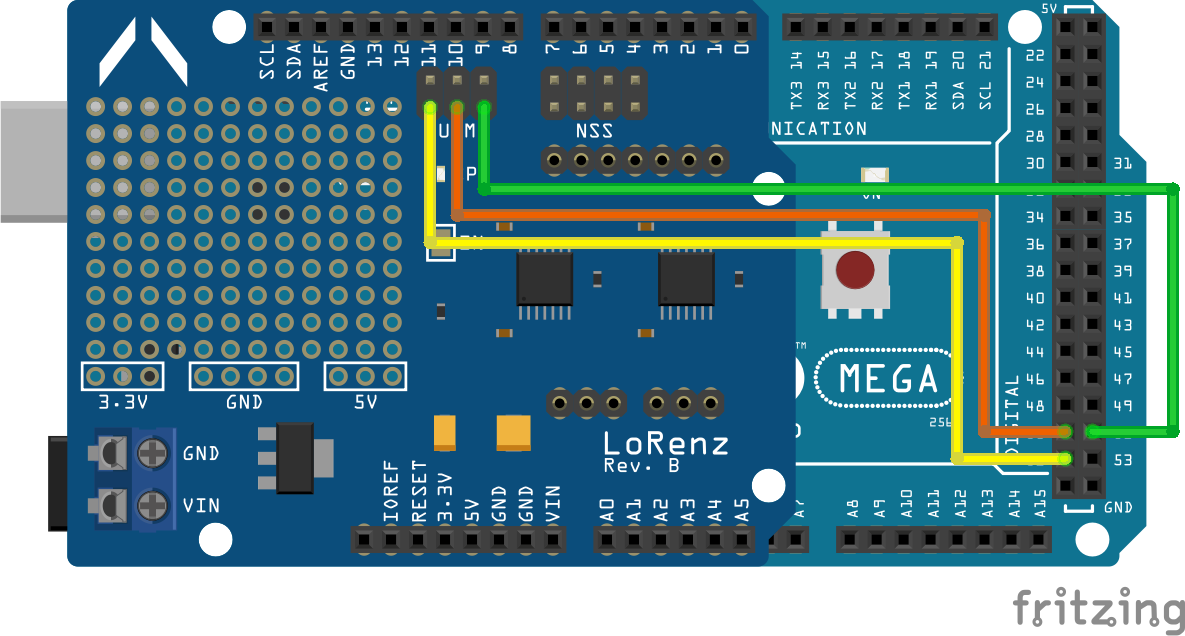
-
breakout_greenThis breakout board matches the following LoRa module:
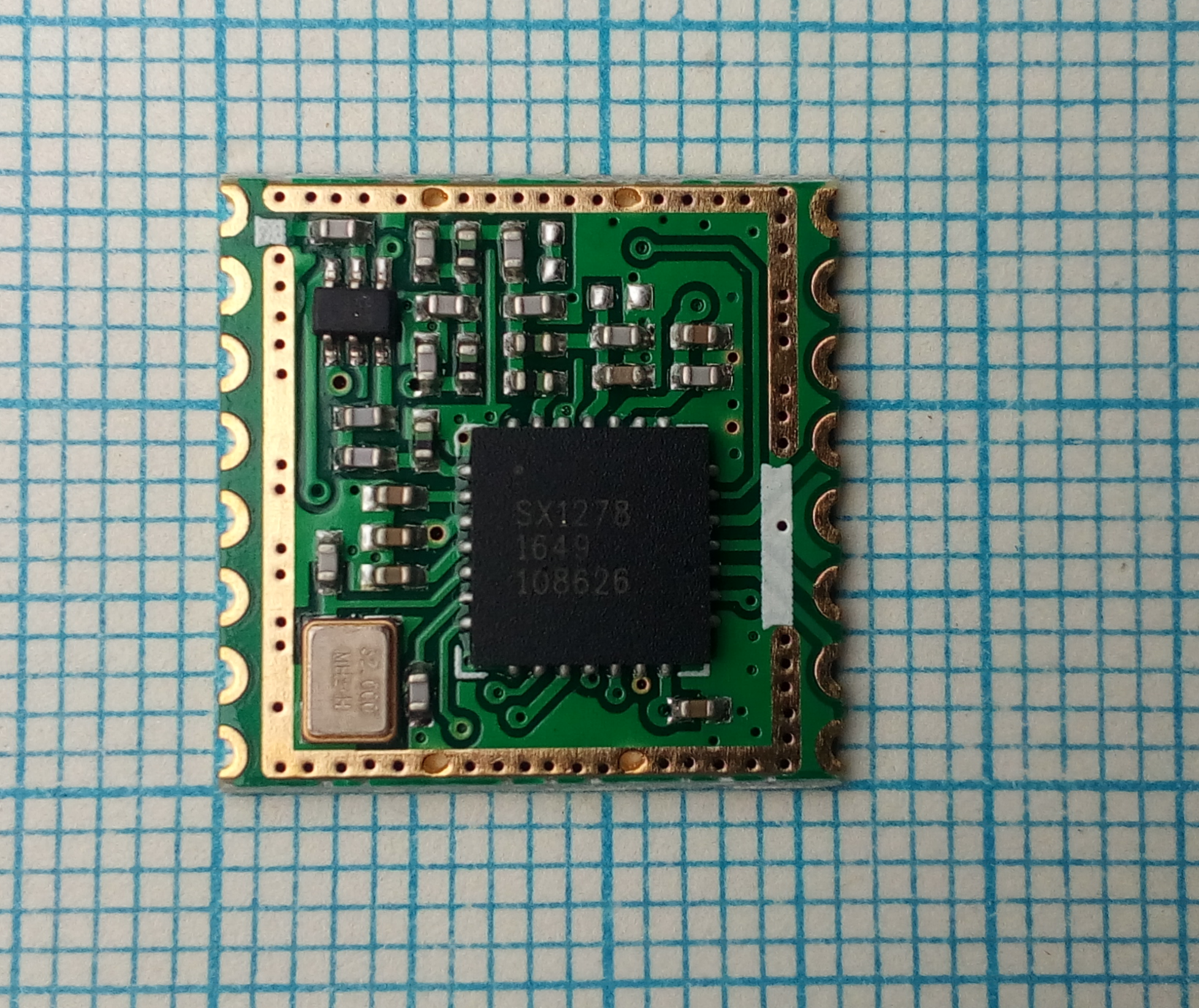
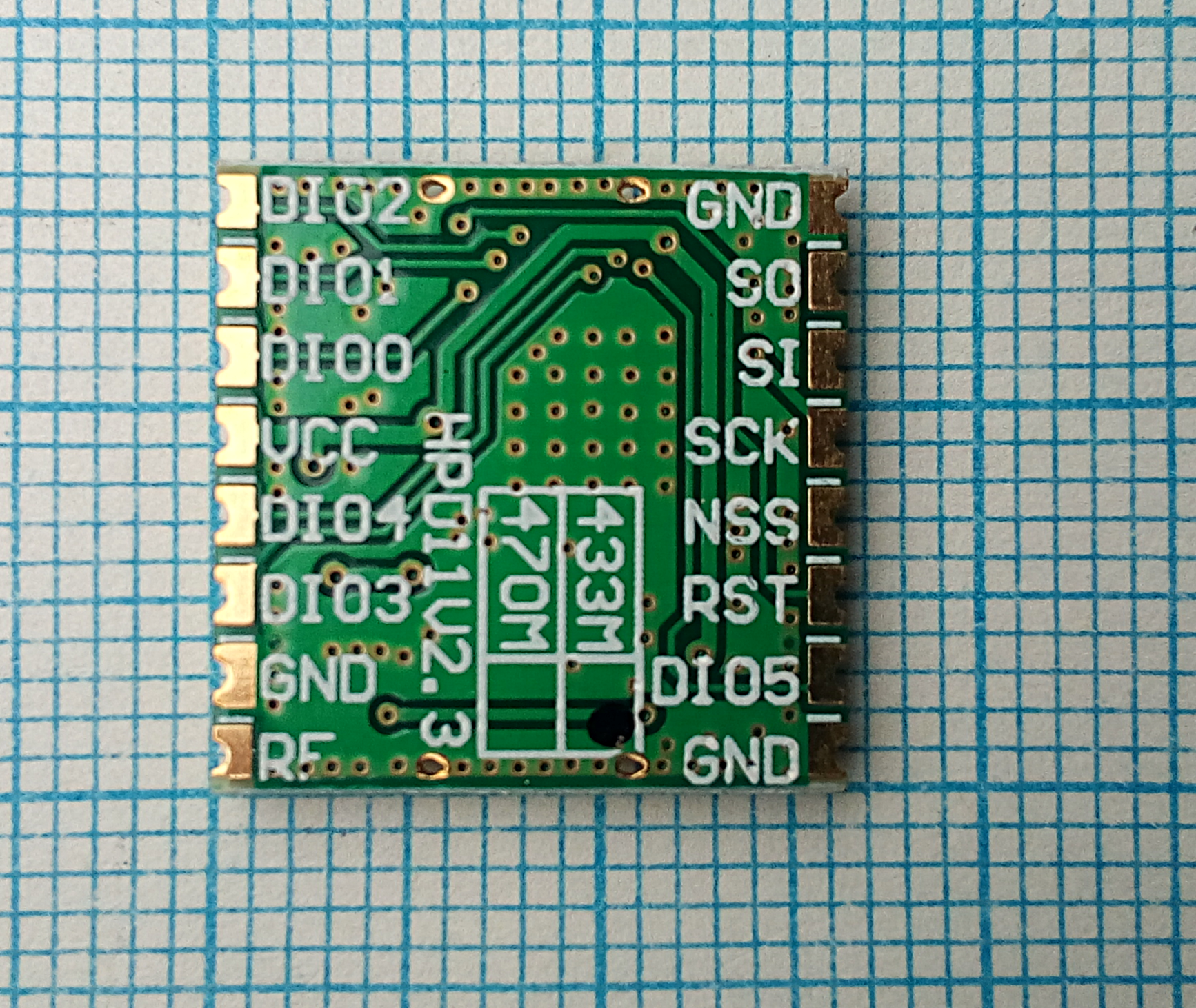
These seem to be fairly common, however, there are several slightly different pinouts. Prior to any soldering, make sure that the module pinout matches the pin description on the breakout board!
-
breakout_blueThis breakout board matches the following LoRa module:
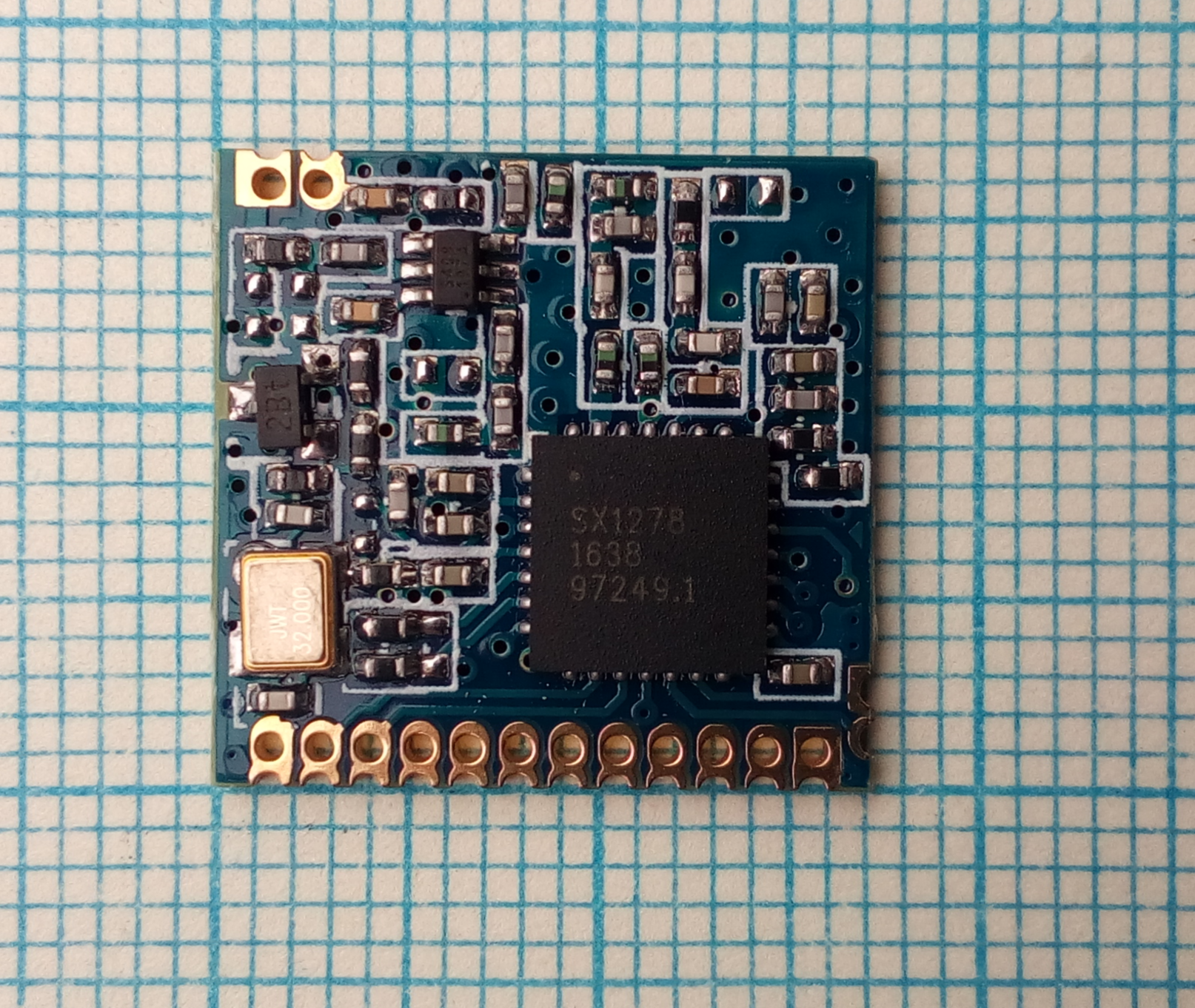

The amount of these modules on the market seems to be declining lately, but it's still possible to buy them. Again, there are multiple different pinouts.
